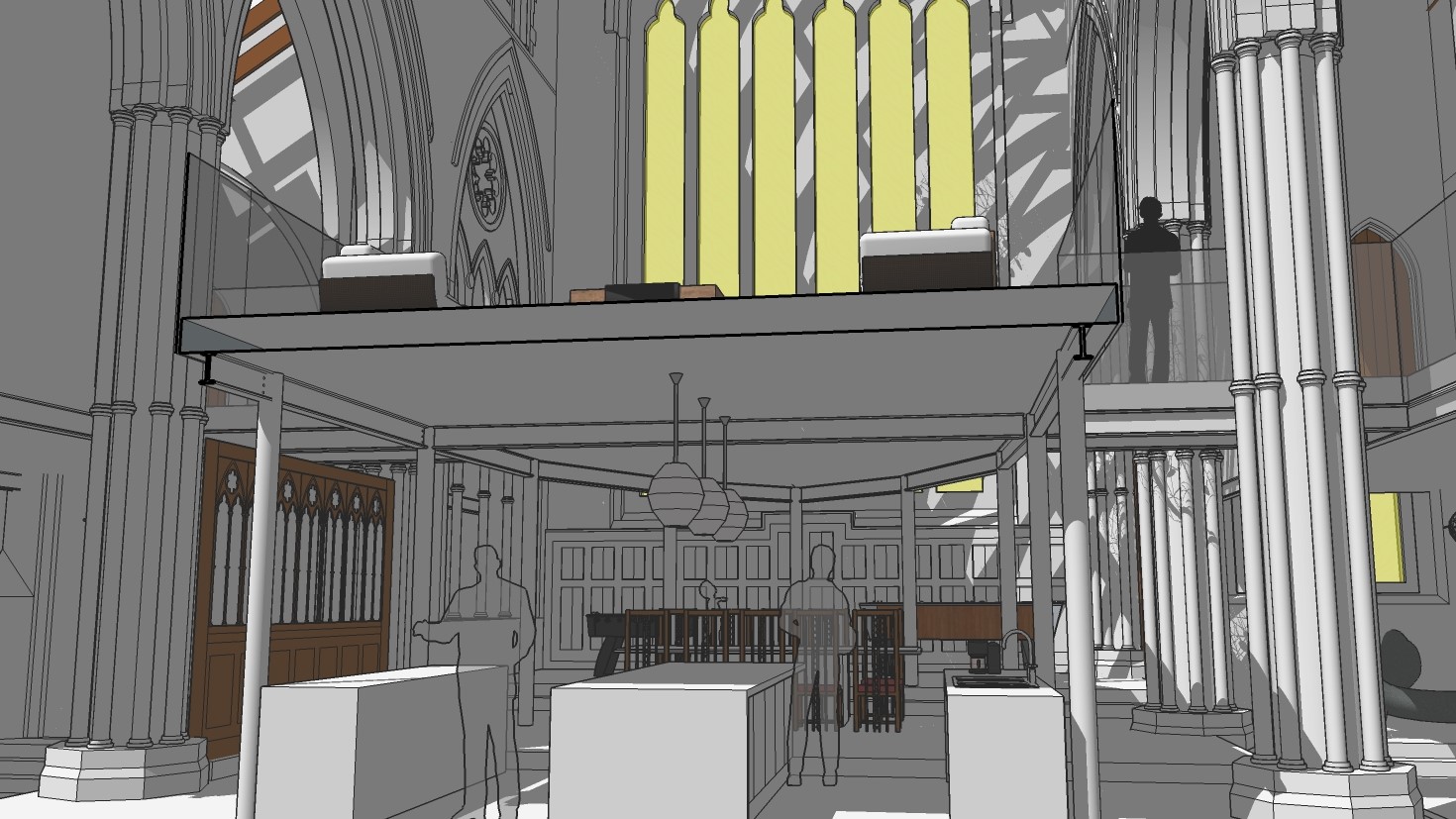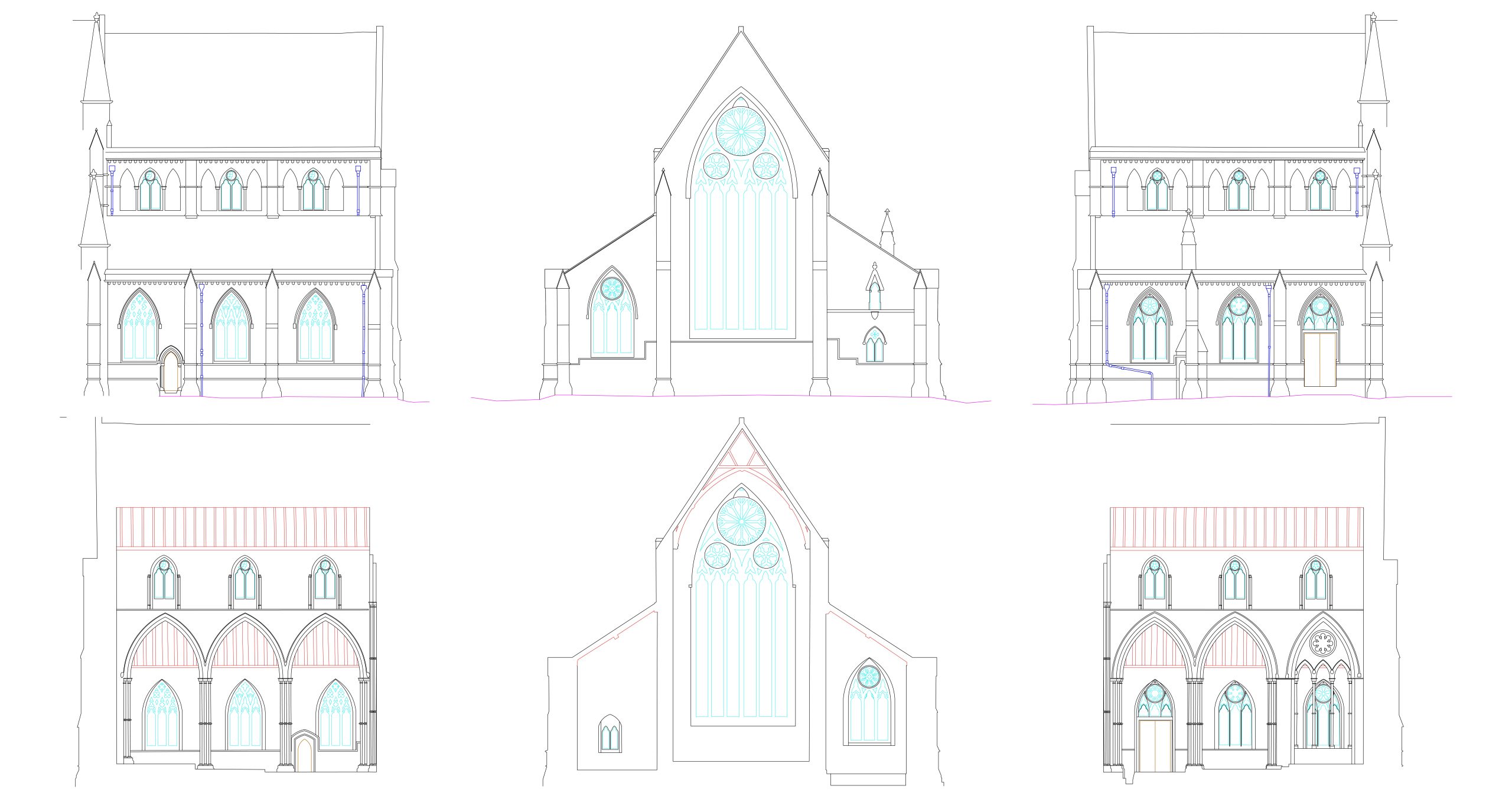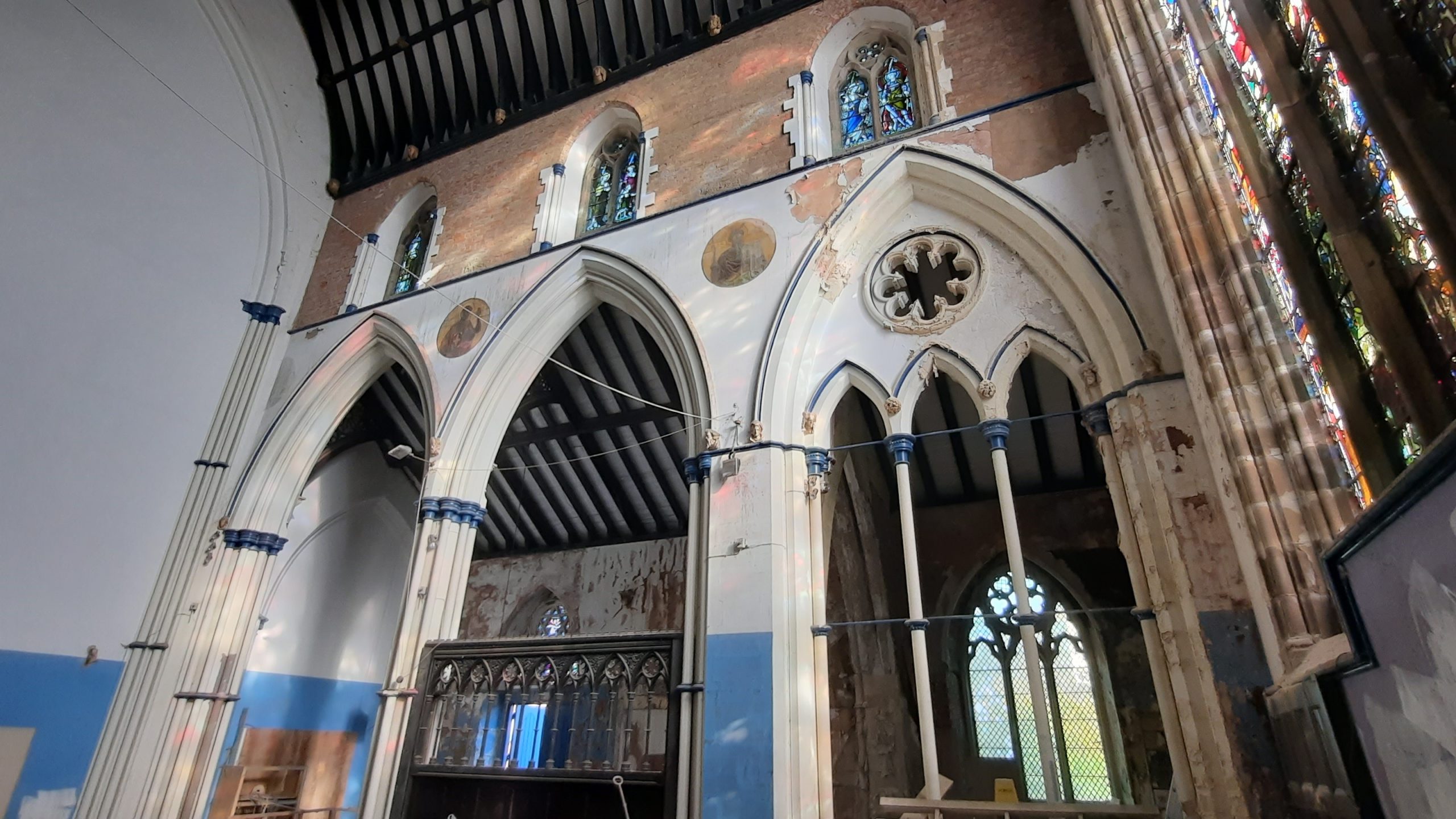Project: St Mary’s Church conversion
Location: Hulme, Manchester
Powers’ involvement: Measured building survey with internal floorplans and external elevations
Project completion: March 2025

About the project
St Mary’s Church, a former gothic revival church, was originally built in 1858. It received a Grade II listed building status in 1974 and is believed to be the first industrial-era built church in the UK. The Powers team surveyed the empty part of the church, to enable designs to be developed for its conversion into a residential dwelling.
Our involvement
The Powers team was commissioned to produce internal floorplans and external elevations, capturing the point cloud data with an RTC360 laser scanner. These plans were then used by the architect to develop the designs, complementing the church’s heritage, including the original stained-glass windows.
Laser scanning produces quicker results than traditional surveying methods, such as a total station. The Powers team used a Leica RTC360 to scan the building, as it collects millions of measured points, capturing the smallest, intricate details. It also made it possible to survey the 18 metre internal elevations, which would be difficult to reach by other survey techniques.
The challenges
With the former church’s Grade II listed building status, any changes made needed to adhere to the planning regulations that protect its historical and architectural significance. By capturing laser scans of the internals and the externals of the building, Powers was able to provide the architects with the information that they needed.
Accurate height measurements were important so that the architect could ascertain best levels for floors, and the resulting headroom through the arches, and the window head heights. It was also critical to understand the positions of all of the open floor trenches and their depths, so that the design of new foundations, which would be punched through the floor, had minimal impact on the historic fabric of the building.
Laser scanning provides a detailed information of the existing structure that can then be used to retrofit the space to suit its new purpose. The architect also required external elevations of the church to record the details of tracery (architectural ornamental work with branching lines) to the internal stonework, panelling and features, such as the rood screen (richly carved stone) of the windows and archways. These were required to show the conservation officers the proposed repairs. While there are no alterations to be done to the external façade of the church, due to its listed building status, a full elevation drawing was needed to gain planning and listed building consent to carry out the regenerative works.
Keeping a historical record of the church’s design and structure is important for record-keeping. Laser scanning is an ideal method to document the evolution of the church and its design over time.

The outcome
Converting a church into a residential property is an innovative and creative way to give a building a new life. By undertaking surveys to develop the internal floorplans and external elevations of the former church, Powers was able to provide the information designworks required to take the project to the next stage.








